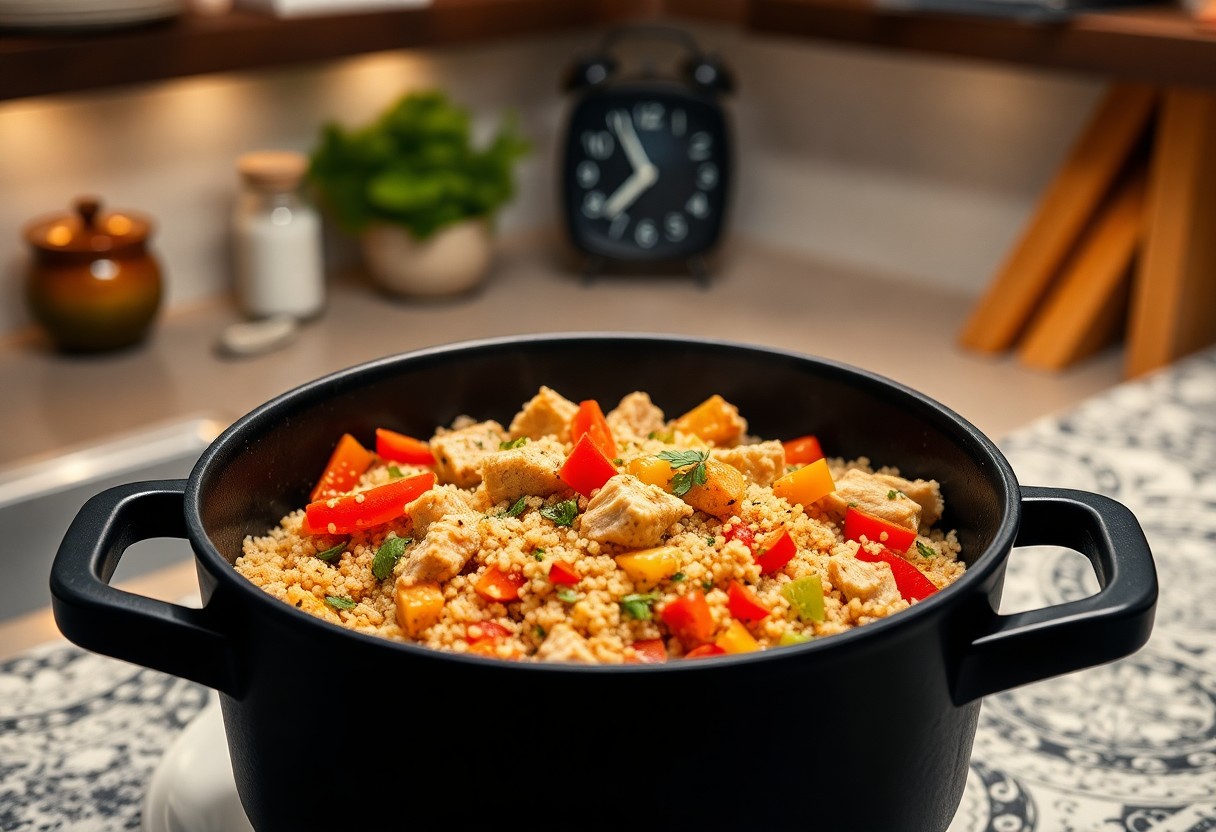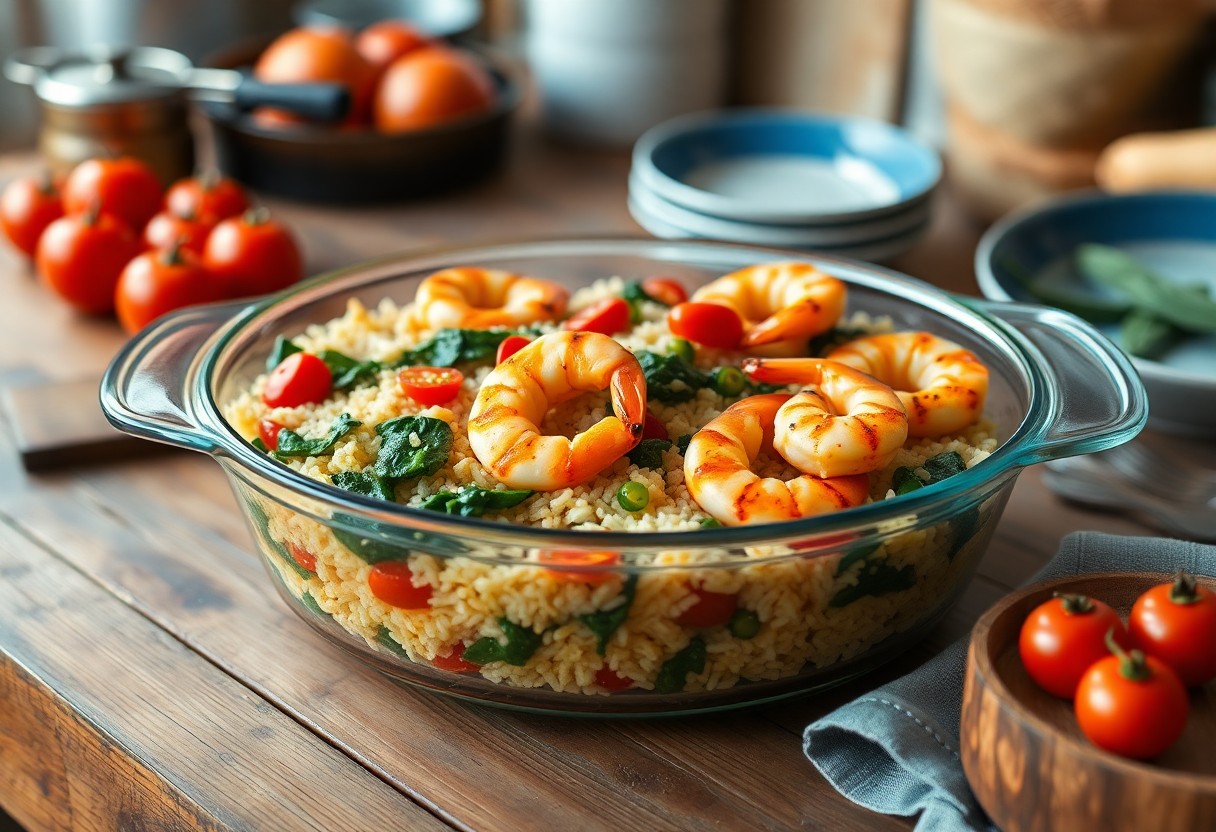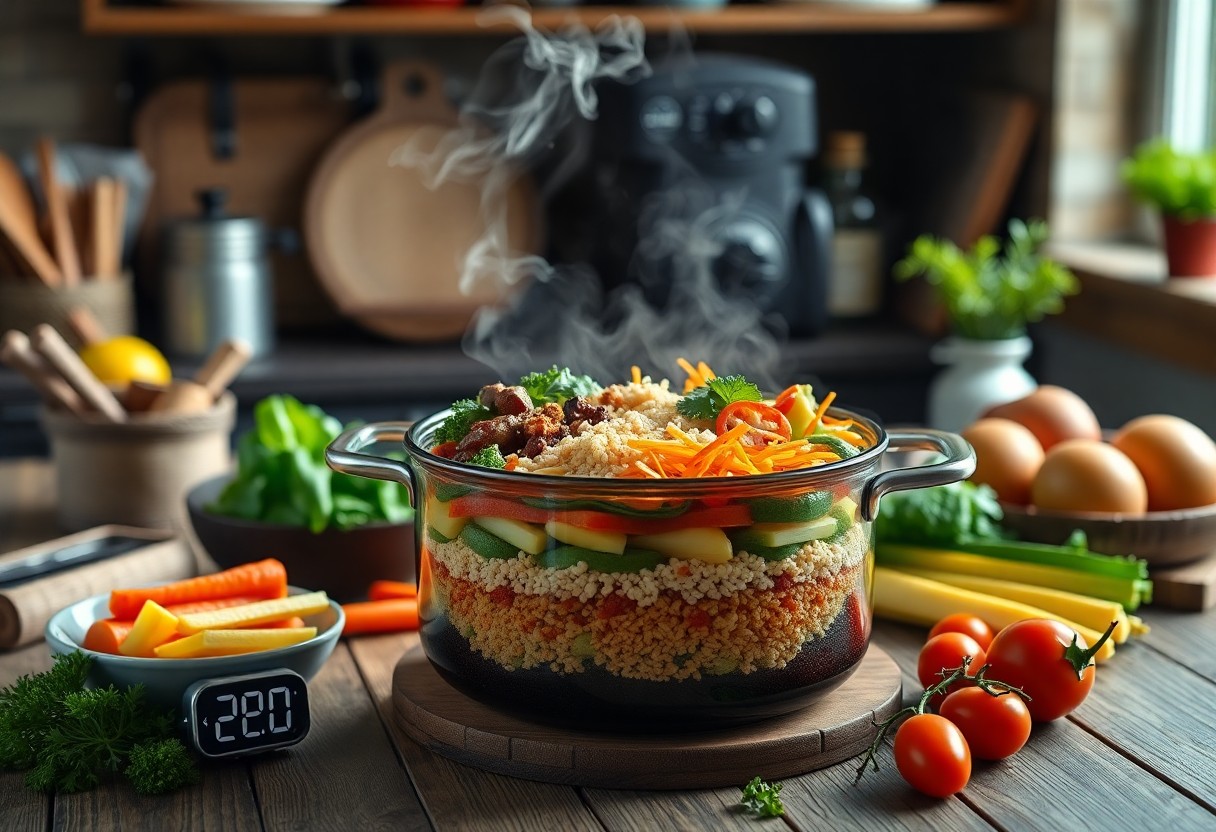Over time, you may have found yourself overwhelmed by lengthy cooking processes that eat up your evening. This one-pot layering trick can significantly cut down your cooking time by 20 minutes, allowing you to savor delicious meals without the hassle. By strategically layering ingredients, you enhance flavor while optimizing cooking efficiency, meaning less clean-up and more time enjoying your culinary creations. Dive into this method and reclaim your time in the kitchen without sacrificing taste or quality!

Key Takeaways:
- This cooking method allows for a more efficient use of time by layering ingredients in a single pot, reducing the need for multiple cooking vessels.
- The layering technique helps in evenly distributing heat and flavors, resulting in a better-cooked meal in less time.
- It minimizes cleanup, making it an ideal choice for busy home cooks who want to save time in the kitchen.
The Science of One-Pot Cooking
One-pot cooking optimizes both flavor and efficiency through a careful combination of ingredients and heat management. This technique not only simplifies meal preparation but also enhances the overall taste by allowing flavors to meld together. The result is a delightful dish that combines textures and tastes more harmoniously than traditional methods.
How Layering Ingredients Affects Cooking Time
Layering ingredients strategically can cut cooking time significantly. By placing denser vegetables or proteins at the bottom of the pot, you ensure they cook through properly, while lighter items can sit above, taking advantage of steam and heat diffusion. This arrangement allows for an even cooking environment where everything finishes simultaneously, saving precious minutes.
The Role of Heat Distribution in Efficiency
Heat distribution plays a pivotal role in the efficiency of one-pot cooking. When using a single pot, heat is transferred uniformly throughout, which prevents hot spots and allows for consistent cooking. Dishes that require longer cooking times benefit as heat circulates effectively, ensuring all ingredients reach their desired tender state without delays. Proper heat distribution also preserves moisture and nutrients, enhancing the final dish’s quality. By using a heavy-bottomed pot, you enhance even heat retention, making your one-pot meals not only faster but also tastier.

The One-Pot Layering Method Unveiled
This innovative cooking technique transforms meal preparation by allowing flavors to meld seamlessly in a single pot. Instead of stirring and mixing, you strategically stack ingredients, enabling even cooking while infusing rich flavors at the same time. This method not only saves you time, but it also results in a beautifully balanced dish that pleases your palate with every layer.
Step-by-Step Guide to Layering
| Step | Description |
|---|---|
| 1 | Start with a base layer, such as grains or pasta, ensuring they are evenly spread across the pot. |
| 2 | Add proteins like chicken or beans next, placing them strategically on top of the base layer. |
| 3 | Next, layer vegetables that require longer cooking times, like carrots or potatoes. |
| 4 | Finish with quicker-cooking vegetables, such as bell peppers or spinach, and season as desired. |
Common Pitfalls and How to Avoid Them
Layering, while efficient, can go awry if not done correctly. One common mishap is underestimating cooking times for the different ingredients. If you don’t adjust your layer order based on the required cooking times, you risk overcooking delicate items or leaving tougher ones underdone. Always keep an eye on the overall cooking duration and individual ingredient needs to ensure everything is perfectly cooked and bursting with flavor.
Using this method can occasionally lead to uneven cooking or drying out if ingredients aren’t balanced properly. For example, if you pile on thick vegetables without a sufficient liquid base, they may char before cooking fully. To combat this, ensure there’s adequate moisture in your pot. Adding broth or water beneath your layers will help in both steaming and infusing flavor into every ingredient, ensuring a perfectly layered meal every time.
Transforming Flavors: The Art of Strategic Layering
Your culinary creations can explode with flavor through the artful application of strategic layering. By methodically introducing ingredients, you can build complexity in taste that’s both satisfying and memorable. For instance, starting with aromatic vegetables like onions and garlic at the base of your pot allows their essence to bloom and enhance the subsequent layers of ingredients, leading to a more profound flavor profile in the final dish.
Enhancing Taste Through Sequential Cooking
Sequential cooking allows flavors to develop in harmony. By adding ingredients in a deliberate order, you’re ensuring that delicate elements, like herbs or spices, retain their integrity while heartier elements get the time they need to soften and release their flavors. For example, letting spices toast briefly at the start enhances their aromatic oils before the addition of liquids.
Balancing Ingredients for Optimal Results
Achieving a balanced dish requires attention to the variety of ingredients you’re working with. Using both moist and dry components plays a key role in the final flavor and texture. For instance, incorporating vegetables with high water content like tomatoes alongside denser items like potatoes allows for moisture control, ensuring even cooking and flavor absorption.
Creating balance involves understanding how different ingredients interact within your dish. For example, adding acidity through citrus or vinegar can cut through rich, fatty components, making the dish feel lighter and more vibrant. Additionally, layering flavors by introducing salty, sweet, and umami elements in the right sequence can bring an extraordinary depth to your one-pot meal. By thoughtfully considering each layer’s role, you can elevate simple ingredients into a harmonious and complex dish that you’ll enjoy every time.
Time-Saving Techniques: Beyond One-Pot Meals
Exploring efficient cooking methods can drastically cut down on the time you spend in the kitchen. Incorporating techniques like staggered cooking, where you utilize overlapping cooking times for different ingredients, can allow you to multi-task effectively. Opting for pressure cooking can also reduce cooking times significantly, making it ideal when you’re short on time. By utilizing these strategies alongside one-pot meals, you can create complex, flavorful dishes in a fraction of the time.
Tools and Gadgets That Facilitate Quick Cooking
Investing in the right kitchen gadgets can transform your cooking experience. A high-quality blender can quickly puree sauces, while an immersion blender allows for easy blending right in the pot. Consider a food processor for chopping and slicing ingredients in seconds, and an electric pressure cooker for fast-environment cooking. These tools streamline your meal preparation, enabling you to spend less time cooking and more time enjoying your meals.
Meal Prepping: A Complement to the One-Pot Method
Meal prepping can significantly enhance the efficiency of your cooking routine. By dedicating a couple of hours each week to prepare ingredients in advance, you ensure that everything you need for your one-pot meals is ready to go. Chopping vegetables, marinating proteins, or even pre-cooking grains means when it’s time to cook, you’re simply layering the prepped items into your pot, drastically reducing your active cooking time.
Engaging in meal prep not only saves time but also eliminates last-minute decision fatigue. By having prepped ingredients ready, you can assemble meals in less than 30 minutes. For instance, if you pre-chop onions, bell peppers, and zucchini, tossing them into the pot with a protein and spices becomes a swift process, allowing for delicious weeknight dinners without the stress. Regularly batch-cooking staples like rice or beans ensures you have a variety of choices at your fingertips, enhancing flavor without requiring additional time. This strategy pairs seamlessly with the one-pot method, making your cooking experience faster and more enjoyable.
Real-World Success Stories
Many home cooks and professional chefs alike have discovered the advantages of the one-pot layering trick, leading to remarkable transformations in their time spent in the kitchen and the quality of their meals. Users report not only speeding up their cooking processes by an average of 20 minutes, but they also experience less clean-up and enhanced flavors as the ingredients meld together beautifully. The success stories flooding social media platforms showcase how this technique has empowered home kitchens and professional settings alike.
Home Chefs Share Their Transformations
Home chefs are experiencing remarkable changes in their cooking routines thanks to the one-pot layering technique. Families thrive on quick weeknight dinners, with Instagram reports of dishes prepared in under an hour while maintaining high quality and taste. You’ll find dozens of testimonials saying that the layering trick has cut their meal prep time dramatically while improving the overall enjoyment of cooking.
Professional Chefs Embrace the One-Pot Approach
Professional chefs have also turned to the one-pot method, highlighting its efficiency and innovative cooking style. Michelin-starred kitchens are utilizing this approach not only for faster service but to create complex dishes with less equipment. This method supports restaurant goals of minimizing food waste while elevating flavor profiles, proving that simplicity doesn’t diminish culinary artistry.
In restaurants, chefs report that using the one-pot layering technique allows for sophisticated dishes that require less oversight, enabling them to focus on innovation rather than logistics. High-volume kitchens, like those in bustling food trucks, have successfully integrated this method into their operations, showcasing how busy atmospheres benefit from streamlined processes. Guests have raved about the depth of flavor achieved in meals that are prepped and cooked efficiently, and the sustainability of this cooking style reduces waste, making it a hit with environmentally-conscious diners.
Final Words
Taking this into account, the one-pot layering trick can significantly streamline your cooking process, saving you valuable time in the kitchen. By strategically layering your ingredients, you allow flavors to meld while ensuring everything cooks evenly. This method not only enhances your culinary efficiency but also simplifies cleanup, making your cooking experience more enjoyable. Embrace this technique to maximize your mealtime productivity and elevate your home-cooked dishes to new heights without the hassle.
Q: What is the one-pot layering trick, and how does it save time in cooking?
A: The one-pot layering trick involves arranging ingredients in a specific order within a single pot to optimize cooking time and flavors. By layering ingredients such as proteins, vegetables, and grains, it allows for more efficient heat distribution and cooking, thereby reducing the need for multiple pots or lengthy cooking times. For instance, placing denser items like potatoes at the bottom and lighter ones like leafy greens on top ensures that everything cooks thoroughly and evenly, effectively saving up to 20 minutes of cooking time.
Q: Which types of dishes work best with the one-pot layering technique?
A: This technique is particularly effective for dishes that require different cooking times, such as casseroles, one-pot pastas, or risottos. Recipes that include a protein (like chicken or fish), a starch (like rice or pasta), and a variety of vegetables are ideal candidates. The key is to select ingredients that complement each other and can cook at similar rates when layered properly. For example, a chicken and vegetable dish can be made quicker by placing the chicken at the bottom, followed by vegetables and rice, allowing them to cook together in the same pot.
Q: What are the benefits of the one-pot layering trick beyond saving cooking time?
A: Besides saving time, the one-pot layering trick offers several benefits such as minimizing cleanup, enhancing flavor, and ensuring even cooking. Cooking all ingredients in one pot means fewer dishes to wash afterward. Additionally, as ingredients cook together, they release their juices, creating a rich and cohesive sauce that enhances the overall taste of the dish. Lastly, the even heat distribution from the layering method helps to prevent overcooking and ensures that all elements come out perfectly cooked.
